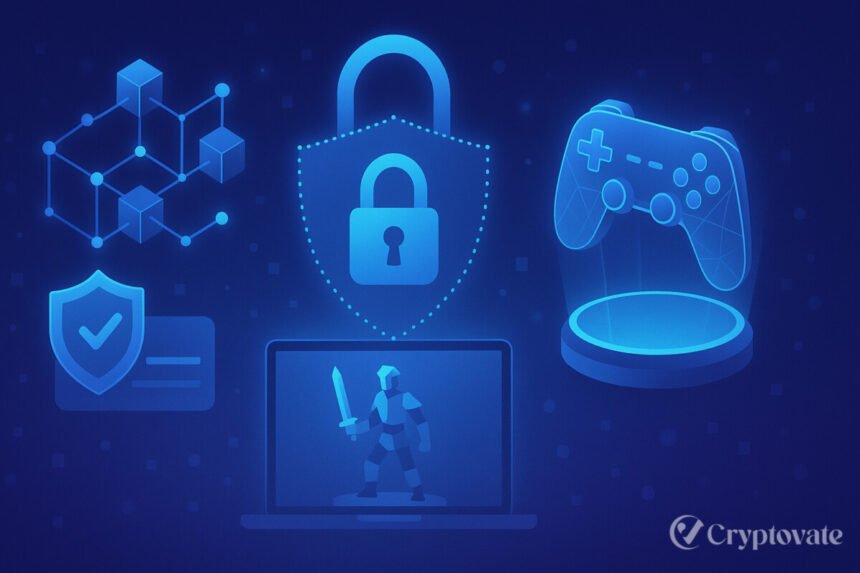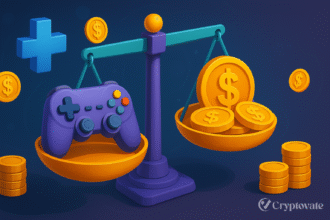– Ad –
| Getting your Trinity Audio player ready... |
During the first half of 2025, Web3 platforms suffered a massive $2.47 billion in losses from hacks and exploits, with Web3 game security emerging as a major vulnerability. That’s no typo. A massive portion of these losses came directly from blockchain games, exposing vulnerabilities in an industry hyped for its promise of fair economies, digital ownership, and next-gen fun. Yet, Web3 gaming is hemorrhaging money through security holes that should’ve been addressed years ago. Let’s dive into what’s broken in Web3 game security, how to fix it, and how to protect players and assets before the next billion-dollar breach.
What Makes Web3 Games Such Easy Targets?
Simple. Real money. Real value. Real incentives to attack. When traditional games get hacked, players lose progress. When Web3 games get hacked, players lose NFTs, crypto rewards, and sometimes their entire wallets.
The problem is, many of these games launched with a “move fast, patch later” mindset. But in Web3, there’s no patching once something’s on-chain. Vulnerabilities become permanent. And attackers only need to win once.
Top 3 Security Risks for Web3 Games in 2025
1. Phishing Attacks Are Evolving Fast
In Q2 2025, phishing was responsible for $395 million in Web3 losses, especially in gaming communities.
Fake game sites, Discord impersonators, malicious token airdrops, they’re getting smarter. And they’re targeting players who don’t always read the fine print before connecting their wallet.
2. Smart Contract Vulnerabilities Are Still Everywhere
From unchecked function calls to reentrancy bugs, smart contract exploits accounted for $235 million in Web3 game-related losses this year.
What gets worse is that many of these games didn’t even bother with an audit before launching.
3. Wallet Compromise and Access Control Weaknesses
You can build the best game in the world, but if your treasury wallet is protected by a single private key, you’re asking for trouble.
34 major incidents in 2025 have stemmed from poor key management. Costing over $1.7 billion.
How to Secure a Web3 Game in 2025
Security isn’t a feature. It’s the foundation. Here’s the Web3 Gaming Security Checklist every dev and every player should keep bookmarked:
- Smart Contract Audits (Ongoing, Not One-Offs)
Don’t just audit pre-launch. Update your code? Re-audit.
- Bug Bounty Programs
Platforms like Immunefi are your allies. Let the whitehats in before the blackhats find a hole.
- Multisig Wallets for Treasuries and Rewards
No single points of failure. Ever.
- Real-Time On-Chain Monitoring
If Ronin had monitoring in place, they wouldn’t have taken 6 days to detect a breach.
- Player Education
Your users are your last line of defense. Keep them informed about fake sites, Discord scams, and phishing tactics.
- Isolated Wallets for Gaming
Tell players to use burner wallets for gameplay. Never connect your vault to a random game contract.
Also Read: Web3 Games vs Traditional Games: Why Web3 Gaming Is Changing Everything in 2025
Red Flags to Watch Out For
- “Guaranteed” earnings (lol)
- Dev team is anonymous or unverified
- No GitHub, no whitepaper, no audit
- No gameplay previews, just token hype
- Influencer-heavy campaigns without substance
Web3 gaming should be about fun and ownership, not rug pulls.
Final Thoughts from Someone Deep in the Trenches
Security is no longer a “nice to have” in Web3 games. It’s the deciding factor between a billion-dollar ecosystem and a failed idea. The real win in Web3 gaming isn’t just creating fun. It’s creating trust through transparency, player protection, and well-designed smart contracts.
As a founder, developer, or community member, if you’re not thinking about web3 game security at every layer, you’re building on sand. The future of gaming is decentralized. Let’s make sure it’s not vulnerable, too.
FAQs
Why are Web3 games so vulnerable to hacks?
Web3 games involve real money and NFTs, making them prime targets. Weak smart contracts and poor wallet security amplify risks.
How can players protect themselves in Web3 gaming?
Use isolated burner wallets, avoid suspicious links, and verify game authenticity before connecting assets.
What’s the most critical security step for developers?
Conduct ongoing smart contract audits and implement multisig wallets to secure treasuries and rewards.
How do phishing attacks target Web3 gamers?
Scammers use fake sites, Discord impersonation, and malicious airdrops to trick players into connecting wallets or sharing keys.

















